
Concept explainers
a.
To Find: How many pairs of
a.
Answer to Problem 26PSC
14 pairs of angles are formed, when two parallel lines are intersected by a transversal excluding linear pair of angles.
Explanation of Solution
Given:
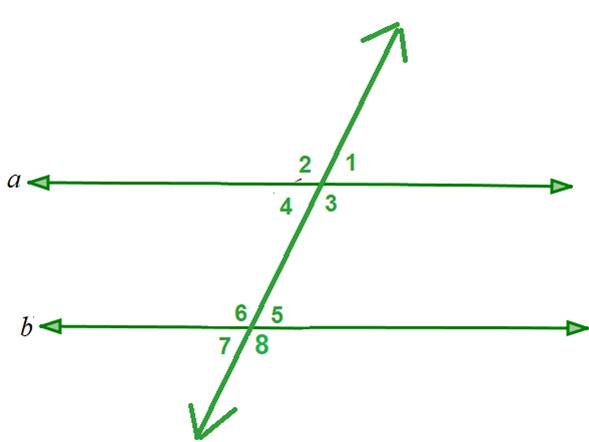
Concept Used:
When two parallel lines are intersected by a transversal following angles formed:
- Pair of corresponding angles
- Pair of alternate interior angles
- Pair of alternate exterior angles
- Pair of supplementary angles
- Pair of vertically opposite angles
Calculation:
Here, we have
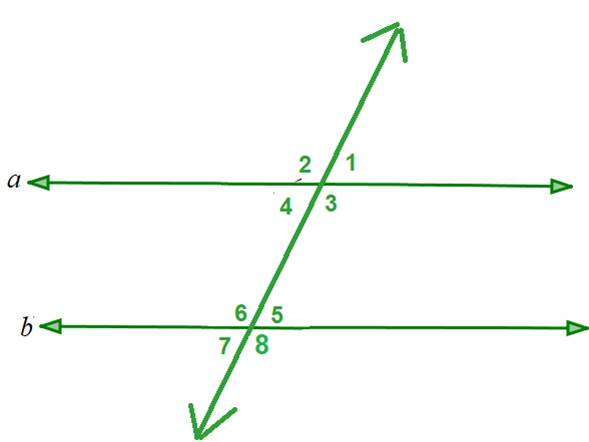
Since, we know that when two parallel lines are intersected by a transversal following angles formed:
- Pair of corresponding angles
- Pair of alternate interior angles
- Pair of alternate exterior angles
- Pair of supplementary angles
- Pair of vertically opposite angles
Thus, there are 14 pairs of angles formed, when two parallel lines intersected by a transversal.
b.
To Find: The probability of choosing pairs of alternate interior or pairs of exterior angles of pairs of corresponding angles.
b.
Answer to Problem 26PSC
Probability of choosing pairs of alternate interior or pairs of exterior angles of pairs of corresponding angles
Explanation of Solution
Given:
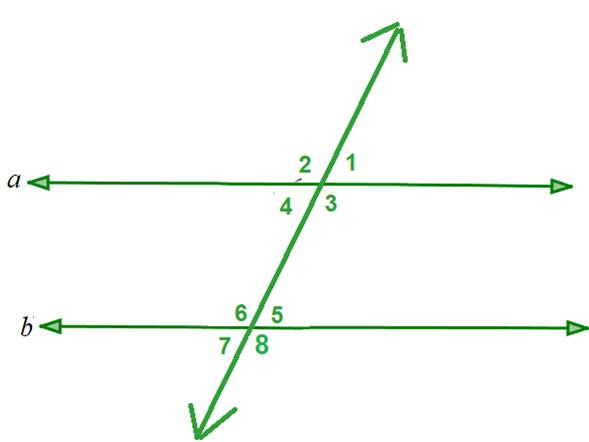
Concept Used:
When two parallel lines are intersected by a transversal following angles formed:
- Pair of corresponding angles
- Pair of alternate interior angles
- Pair of alternate exterior angles
- Pair of supplementary angles
- Pair of vertically opposite angles
Calculation:
Here, we have
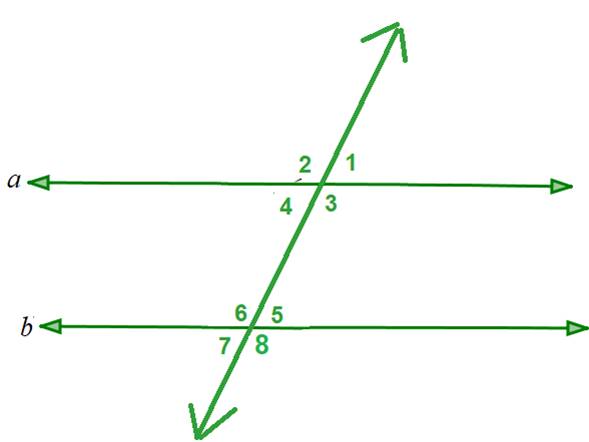
Since, we know that when two parallel lines are intersected by a transversal following angles formed:
- Pair of corresponding angles
- Pair of alternate interior angles
- Pair of alternate exterior angles
- Pair of supplementary angles
- Pair of vertically opposite angles
Hence, the probability of choosing pairs of alternate interior or pairs of exterior angles of pairs of corresponding angles
c.
To Find: The probability of choosing pairs of supplementary angles.
c.
Answer to Problem 26PSC
Explanation of Solution
Given:

Concept Used:
When two parallel lines are intersected by a transversal following angles formed:
- Pair of corresponding angles
- Pair of alternate interior angles
- Pair of alternate exterior angles
- Pair of supplementary angles
- Pair of vertically opposite angles
Calculation:
Here, we have
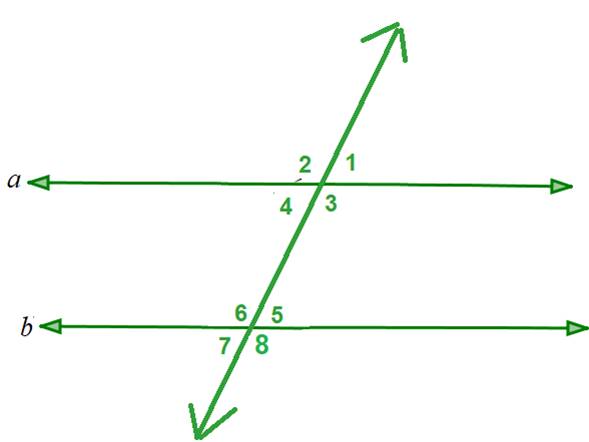
Since, we know that when two parallel lines are intersected by a transversal following angles formed:
- Pair of corresponding angles
- Pair of alternate interior angles
- Pair of alternate exterior angles
- Pair of supplementary angles
- Pair of vertically opposite angles
Chapter 5 Solutions
Geometry For Enjoyment And Challenge
Additional Math Textbook Solutions
Introductory and Intermediate Algebra for College Students (5th Edition)
Fundamentals of Statistics (5th Edition)
Calculus: Early Transcendentals (2nd Edition)
A Graphical Approach to College Algebra (6th Edition)
Single Variable Calculus: Early Transcendentals (2nd Edition) - Standalone book
 Elementary Geometry For College Students, 7eGeometryISBN:9781337614085Author:Alexander, Daniel C.; Koeberlein, Geralyn M.Publisher:Cengage,
Elementary Geometry For College Students, 7eGeometryISBN:9781337614085Author:Alexander, Daniel C.; Koeberlein, Geralyn M.Publisher:Cengage, Elementary Geometry for College StudentsGeometryISBN:9781285195698Author:Daniel C. Alexander, Geralyn M. KoeberleinPublisher:Cengage Learning
Elementary Geometry for College StudentsGeometryISBN:9781285195698Author:Daniel C. Alexander, Geralyn M. KoeberleinPublisher:Cengage Learning

